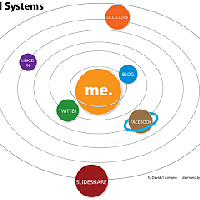Home
About Us
Page 2
The SBIR program is comprised of three stages: Phase 1 is where small business establish feasibility and technical merit of their proposed area of study, Phase 2 is where these people move forward to research and development efforts in order to advance their technology towards ultimate commercialization, and Phase 3 where they're supposed to have fully commercialized their technology using non-SBIR funds, which would mean they'd have to find a third-party financier.
|
|
The NIH has discovered that the small business concerns find it rather hard to move into Phase 3, due to the shortage of third-party funding.
In response, the NIH has developed the SBIR Phase 2B program where they will provide funding to small business concerns in need of such finances.
The NIH will give priority to projects that address one of the following areas: cancer therapeutics, cancer imaging technologies, interventional devices, and in vivo diagnostics, and in vitro and ex vivo cancer diagnostics and prognostics.
The NIH will administer a total amount of $10,000,000 which will be divided into 10 awards.
Eligible applicants for this program are small business concerns who, at the time of award of Phase I and Phase II, meets all of the following criteria:
a) Is organized for profit, with a place of business located in the United States, and operates primarily within the United States and makes a significant contribution to the United States economy by way of payment of taxes or use of American products, materials or labor
b) Is in the legal form of an individual proprietorship, corporation, joint venture, association, trust or cooperative, partnership, or limited liability company
c) Is at least 51% owned by individual(s) who are citizens of, or permanent aliens in, the United States
d) Does not have more than 500 employees.
Small Business Innovation Research Phase IIB Bridge Awards
Back to Page 1
About The Author The TopGovernmentGrants Editorial Staff maintains one the most comprehensive Websites offering information on government grants and federal government programs. The staff also provides resources to other Websites with information on environmental grants and grants for youth programs. |
Additional Resources
category - Small Business Grants
The Secret to Acquiring Business Grants
Common Bean Productivity Research for Global Food Security Competitive Grants Program
Small Business Administration's Small Business Investment Companies
How The Government Can Help Your Small Business
Follow @topgovtgrant
Social Entrepreneurship
Spotlight
Social Enterprise Version 2.0

Midsize businesses are tapping into the social business market because large companies do not need the help of start-ups to create a “social technology stack.” But a social business stack cannot generate revenue by itself.
